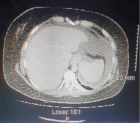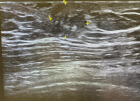About University of the Punjab, Lahore
University of the Punjab, Lahore
Articles by University of the Punjab, Lahore
in silico discovery of potential inhibitors against Dipeptidyl Peptidase-4: A major biological target of Type-2 diabetes mellitus
Published on: 26th February, 2020
OCLC Number/Unique Identifier: 8560723476
Objectives: Type-2 diabetes mellitus, caused by impaired secretion of insulin, is becoming one of the health hazardous threats to human lives across the world. Its prevalence is rising with time. In this study, 2750 phytochemicals, that are considered to have great ability to eliminate diseases caused by different viruses and bacteria, are obtained from different medicinal plants and discovery of inhibitors through in silico method was performed against Dipeptidyl peptidase-4 (DPP4).
Method: The pharmacological assessment and pharmacokinetics of phytochemicals, molecular docking and density functional theory (DFT) analysis helped to explore the inhibitory action of phytochemicals against DPP4. Total forty-nine phytochemicals were screened initially to reduce the number of compounds to be analyzed further based on a threshold of binding affinity ≥ -5.5 kcal/mol and were considered for further computational studies to analyze their inhibitory effects for DPP4. For comparison and validation of the results of present study, various previously reported and experimentally validated compounds were docked with the DPP4. For these dockings, binding affinity was predicted and compared with those of phytochemicals to check if these phytochemicals are competent enough to be used as an inhibitor in the treatment of diabetes mellitus in the future.
Results: Only four phytochemicals showed binding affinity greater than those of experimentally validated compounds. These included two phytochemicals from Silybum marianum, i.e. Diprenyleriodictyol and Taxifolin and while other two phytochemicals from Santolina insularis and Erythrina Varigatae i.e. Papraline and Osajin respectively. The reactivity levels for these four phytochemicals with the binding site residues of DPP4 were obtained by DFT based analysis, in which ELUMO, EHOMO and band energy gap were computed.
Conclusion: Based on these results, it is concluded that these four phytochemicals, after passing through in vitro and in vivo validation, can be utilized as potential DPP4 inhibitors as they have strong properties as compared to those of various experimentally validated inhibitors.
Characterization of plastic degrading bacteria isolated from landfill sites
Published on: 28th May, 2020
OCLC Number/Unique Identifier: 8605989023
The plastic pollution is threatening the environment because it has very slow degradation rate and high usage in regular activities. The present study aims at the isolation of novel microorganisms that would assist faster degradation process of polyethylene. The waste samples were collected from different landfills and dumpsites. Out of forty samples, eight samples were found to degrade polythene strips in liquid medium. Further screening of these samples showed that two strains of microbes had high potential for polythene degradation. Biochemical tests and ribotyping were performed for characterization of isolated bacteria. Resultantly, two novel bacterial strains were identified named; Bacillus wudalianchiensis_UMT (2A) and Pseudomonas aeruginosa_UMT (6). Analysis of these microbes further revealed that Bacillus wudalianchiensis_UMT and Pseudomonas aeruginosa_UMT have capability to degrade 6.6% and 4.8% polyethylene respectively. So, the results disclosed that these bacteria have great potential to degrade polythene in less time as compare to natural degradation process and can contribute to reduce pollution from our environment.
Molecular analysis of immunoglobulins related to Salmonella typhi in pediatric patients
Published on: 24th April, 2020
OCLC Number/Unique Identifier: 8591037429
Typhoid fever is a systemic infection caused by Salmonella enterica serotype typhi. It is of major concern in tropical regions of the world. Highest episodes of typhoid fever occur in Asia i.e.93%. Early diagnosis of the disease is mandatory to lower the mortality rate associated with it as well as to prevent the emergence of antimicrobial drug resistance by Salmonella typhi. Research work was conducted in Immunology Department of the Children’s Hospital, Lahore for the period of one year including a total of 60 patients suspected of having typhoid fever. Serum samples of these patients were tested for typhidot IgG and IgM antibodies as well as for the antibodies against TO and TH antigens using Widal test. Of the total 60 patients, 10 (16.7%) were positive for both typhidot IgG and IgM, 16 (26.7%) were positive for typhidot IgM, 3 (5%) were Positive for typhidot IgG and 31 (51.66%) were negative for both typhidot IgG and IgM. Reading the results of Widal test, 8 (13.33%) were positive for Widal TO and TH antigens, 3 (5%) were positive for Widal TO antigen, 19 (31.7%) were positive for Widal TH antigen and 30 (50%) were negative for Widal TO and TH antigens. IgM is positive at the early stage of acute typhoid fever, IgM along with IgG positive means the middle stage of acute illness. The detection of only IgG cannot discriminate between acute and convalescent phases as it can stay in the serum for at least 2 years or more. The typhidot test is much helpful for the rapid diagnosis of typhoid fever as compared to Widal test which is still being used in some set ups in poor countries, although has become mostly obsolete. By testing the rise of IgM and IgG antibodies against Salmonella typhi, we can detect the infection at early and late stages, respectively

HSPI: We're glad you're here. Please click "create a new Query" if you are a new visitor to our website and need further information from us.
If you are already a member of our network and need to keep track of any developments regarding a question you have already submitted, click "take me to my Query."




















































































































































